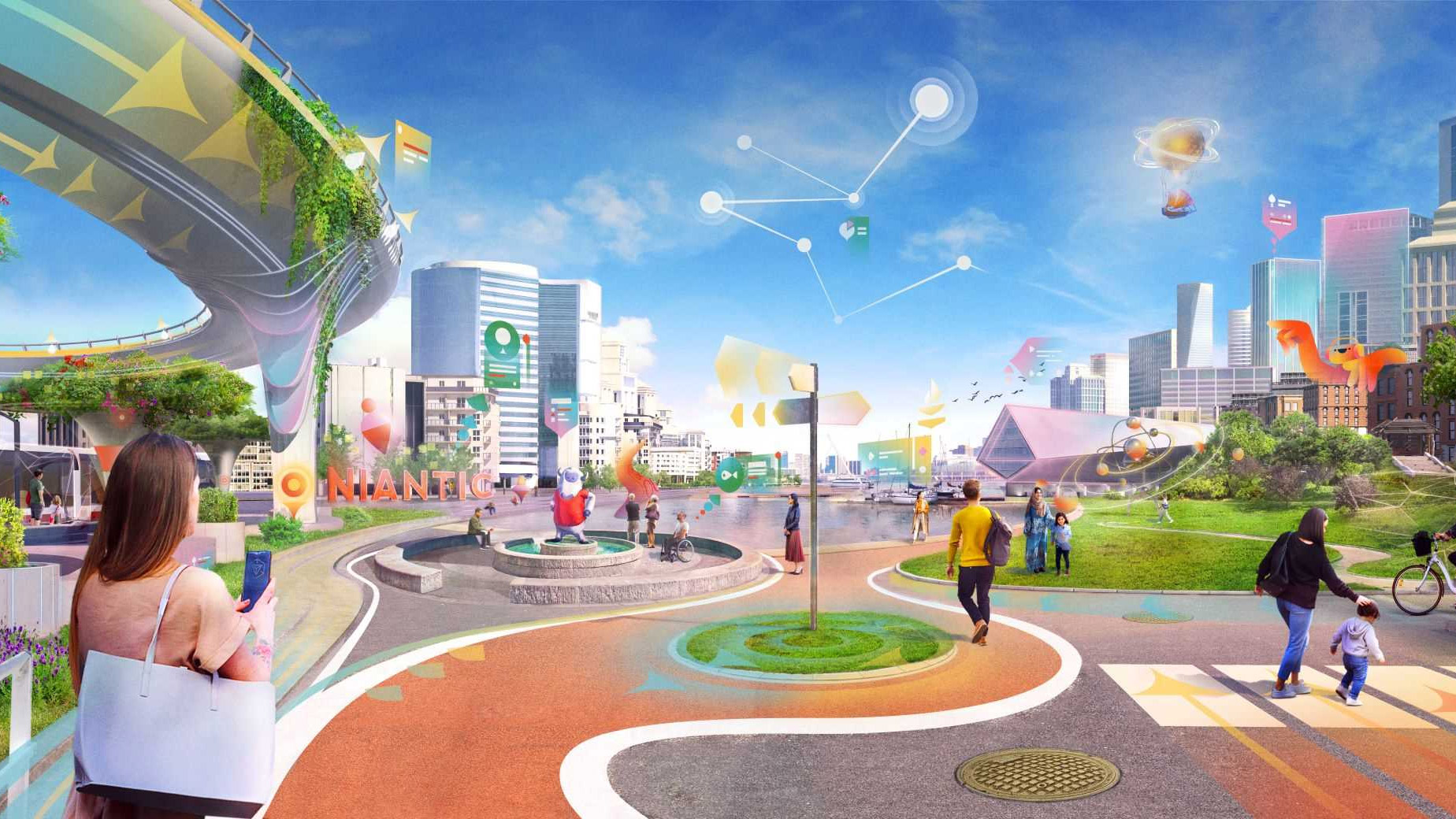Niantic says it plans to launch its Lightship Visual Positioning System at its developer summit later this month. The system aims to form an underlying 3D map of the world so that all devices can share the same frame of reference even on massive scales.
Many AR devices today are capable of localizing themselves within an arbitrary environment. An AR headset, for instance, looks at the room around you and uses that information to understand how the headset itself is moving through the space.
But if you want to enable multiple devices to interact in a shared space, both need to be able to localize themselves not just to the environment, but with regards to one another. Essentially, you need both devices to share the same map so that both users see the same thing happening in the same place in the real world.
That’s the goal of Niantic’s Lightship Visual Positioning system, which the company says will allow AR devices to tap into a shared digital map to establish their real-world position with “centimeter precision.” While GPS would be far too inaccurate for the job, such a system would allow devices to understand if they’re in a shared space together, allowing for content to be synchronized between the two for multiplayer and persistent content.
Niantic has been talking about its Visual Positioning System for some time now, but the company says it will first launch the feature as part of its Lightship AR development platform at the end of the month. That will coincide with the company’s first developer event, Lightship Summit, which is happening May 24th & 25th in San Francisco.
Although Niantic has been pitching is Visual Positioning System as a ‘world-scale’ solution for syncing AR content between devices, out of the gate it will be much more limited. For now the system is only approaching ‘city-scale’ as the company says it will initially function only “at certain Niantic Wayspots in select cities.” The company plans to expand coverage of the Visual Positioning System by crowdsourcing mapping data from the devices that use it, though it’s not clear how quickly that data can be transformed in the way needed to expand the map.
In theory, the system could enable persistent AR content at large scales, which could allow anyone in the area to see the same things (if they’re using the same app), like the concept above that the company has shown previously.
It will surely be some time yet because the Lightship Visual Positioning System achieves anything close to being truly ‘world-scale’. However, the company has one major potential advantage; it could tap into data from its existing games—like Pokémon Go and the upcoming Peridot—to move at a greater mapping pace than almost any other company could. As far as we know, that’s not happening at the moment, but could be in the works.
,
